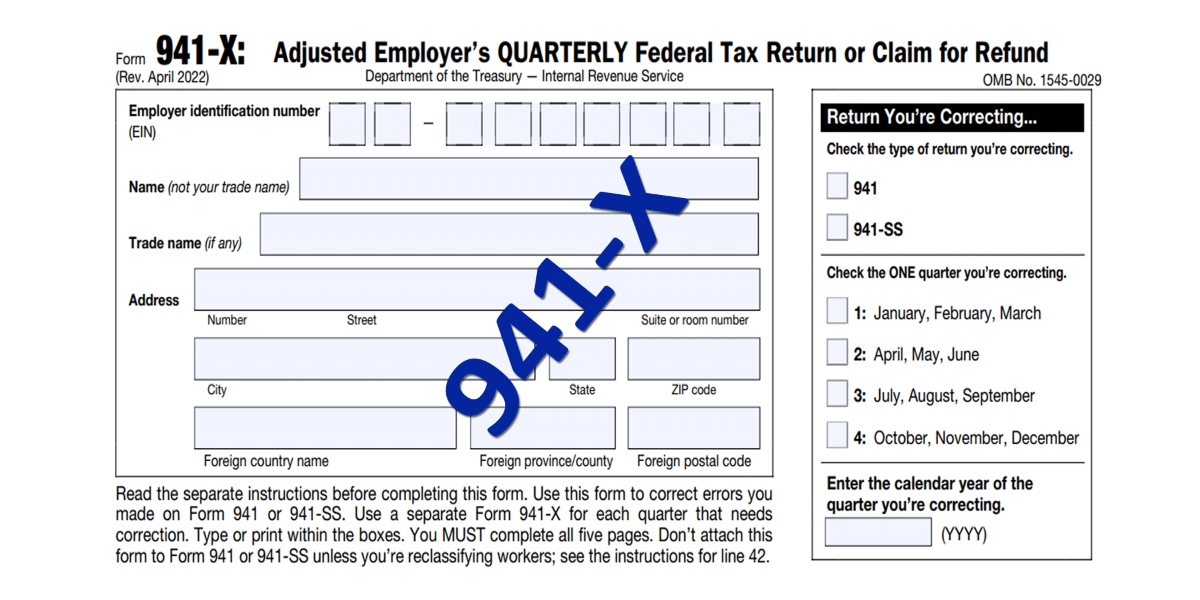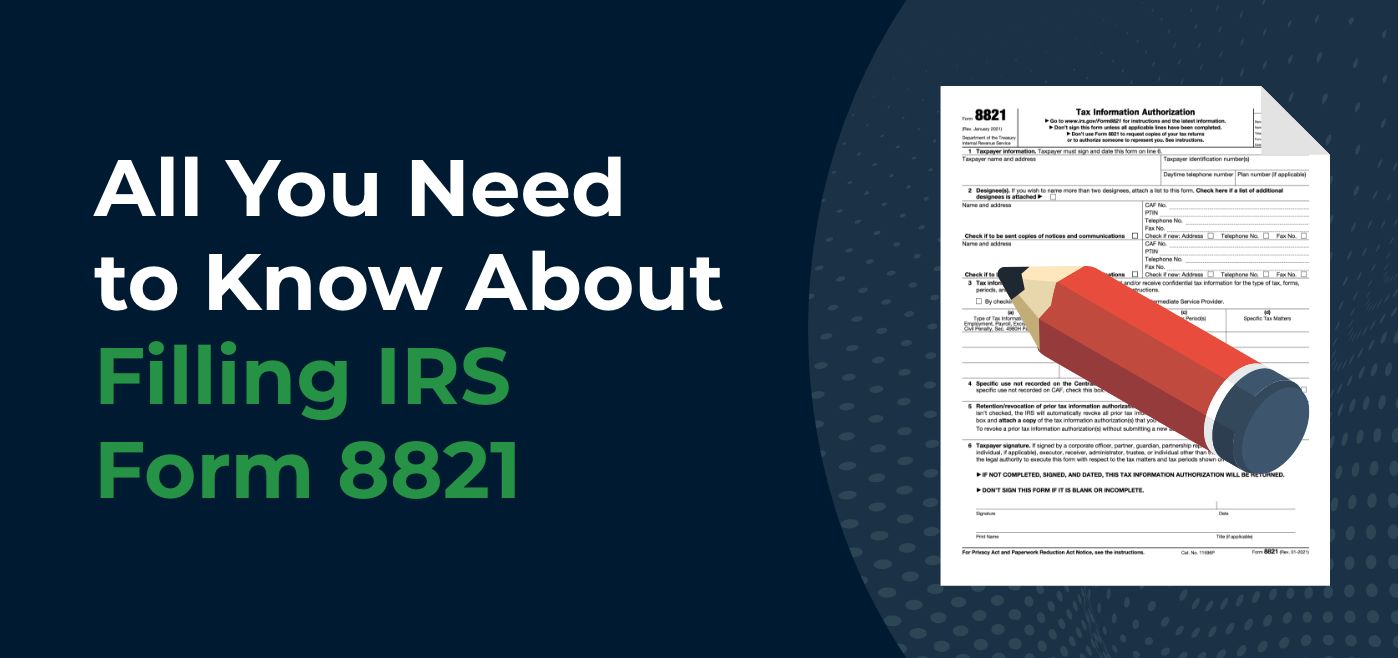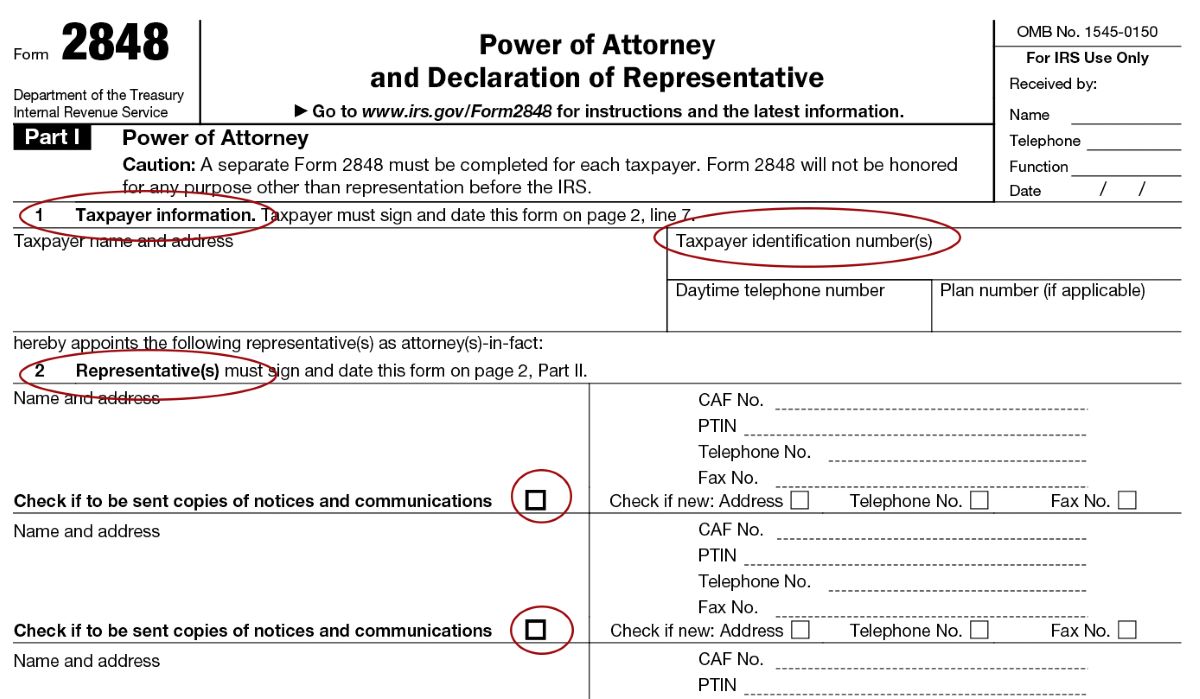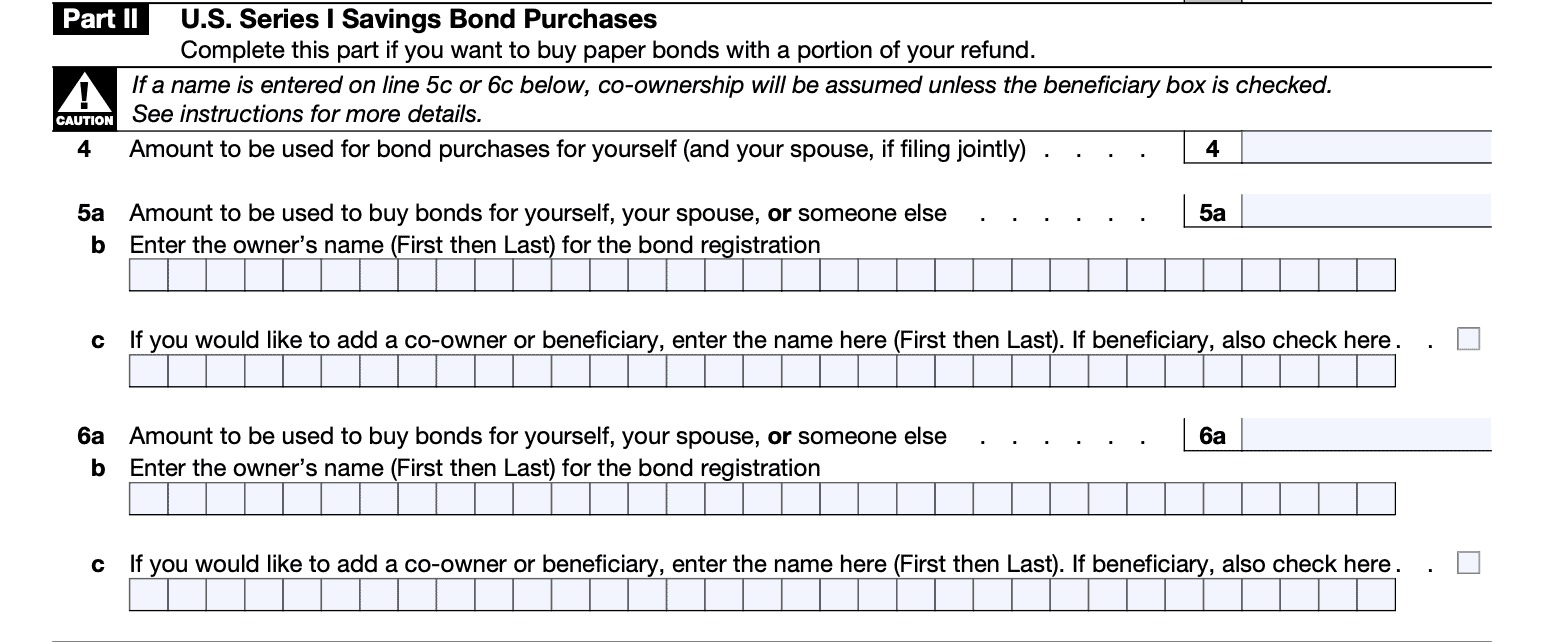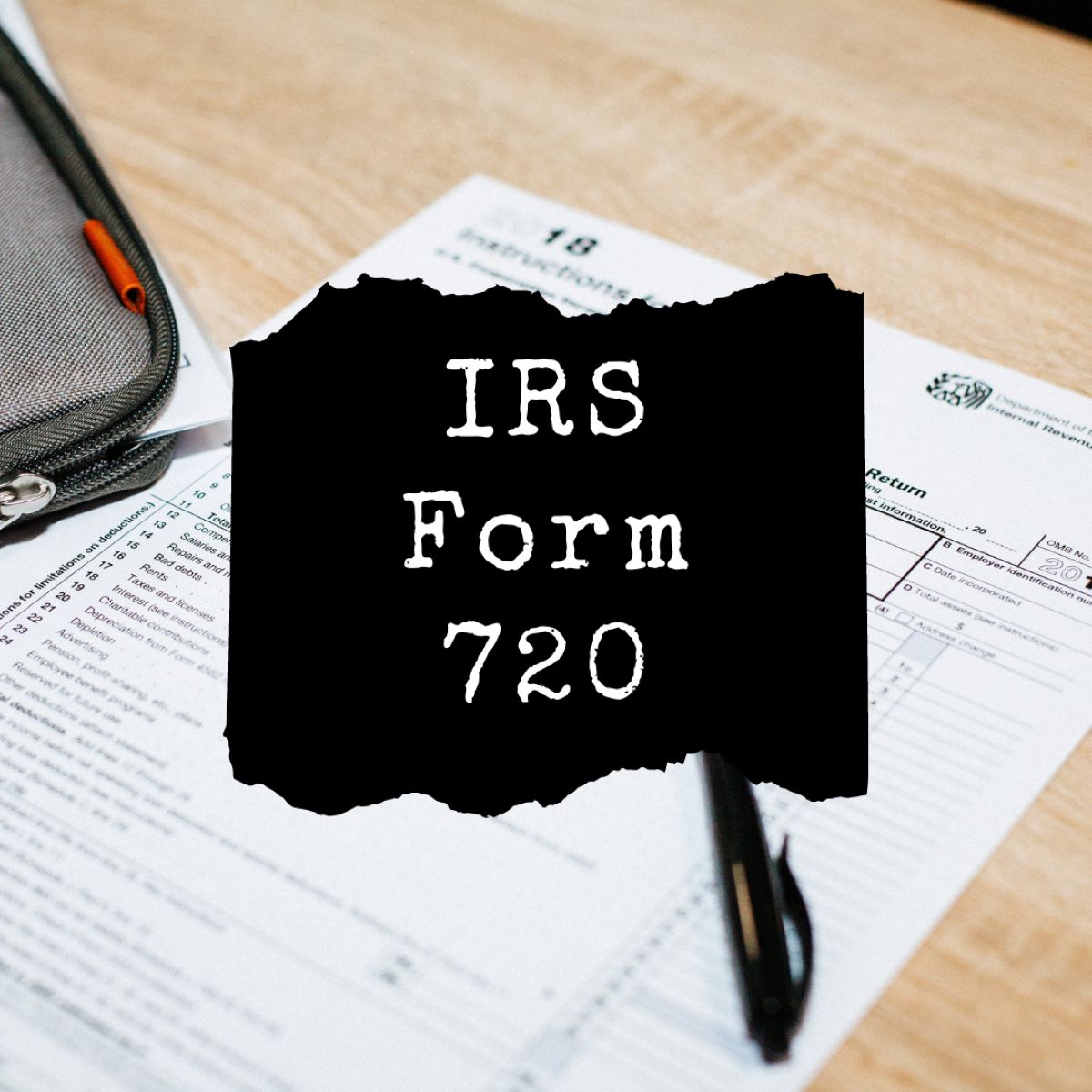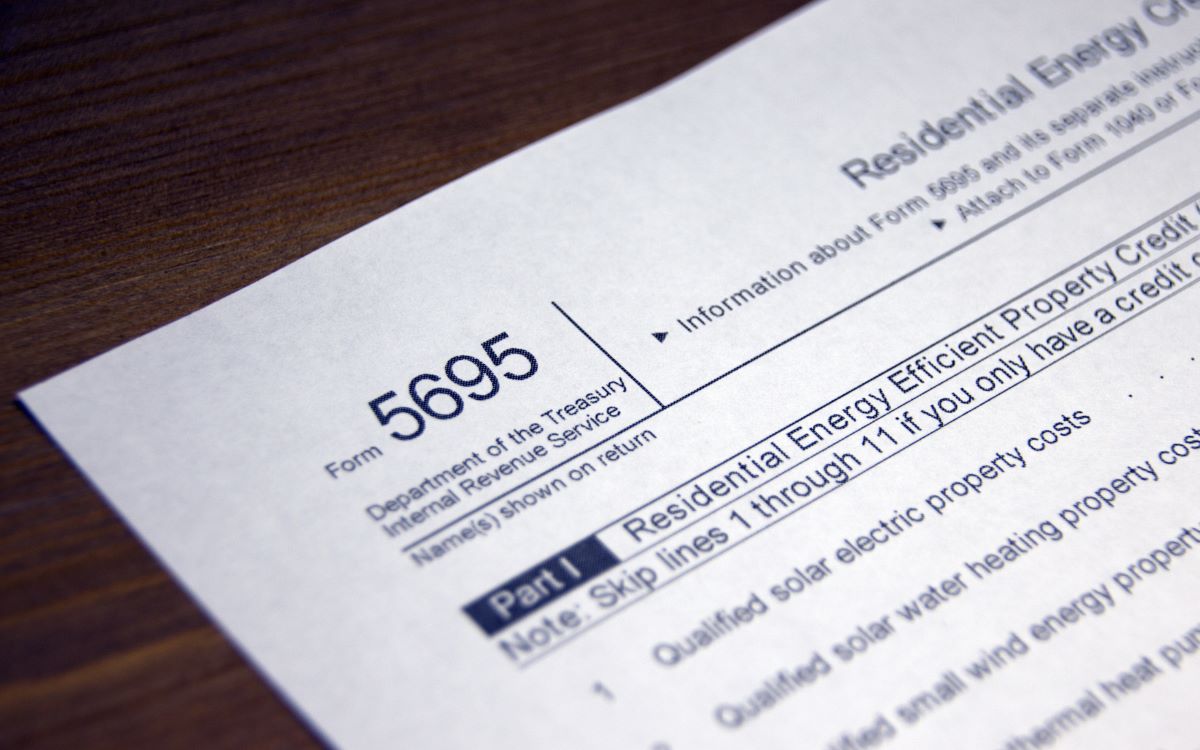

Finance
How To Fill Out IRS Form 5695
Modified: February 21, 2024
Learn how to fill out IRS Form 5695 and save money on your taxes with our comprehensive finance guide.
(Many of the links in this article redirect to a specific reviewed product. Your purchase of these products through affiliate links helps to generate commission for LiveWell, at no extra cost. Learn more)
Table of Contents
Introduction
Welcome to our guide on how to fill out the IRS Form 5695. This comprehensive walkthrough will help you navigate the complexities of this form so that you can properly claim your residential energy and vehicle credits.
Filing taxes can be a daunting task, especially when it comes to claiming credits and deductions. However, understanding the process and having the right information can make it much easier. One credit that you may be eligible for is the residential energy credit, which allows you to recoup some of the costs associated with making energy-efficient improvements to your home. Additionally, the vehicle credit is available for certain electric and hybrid vehicles, providing a financial incentive for those who choose eco-friendly transportation options.
Form 5695 is specifically designed for taxpayers who want to claim these energy-related tax credits. It allows you to accurately report your eligible expenses and calculate the credit amount that you can potentially receive. By filling out this form correctly, you can ensure that you are claiming all the credits you are entitled to while avoiding any potential issues with the IRS.
Throughout this guide, we will provide step-by-step instructions on completing each section of Form 5695. We will also address common questions and misconceptions associated with the form. By following our guidance, you can confidently complete your tax return and maximize your energy-related credits.
It’s important to note that while this guide provides general information, every taxpayer’s situation is unique. We recommend consulting with a tax professional or reviewing the IRS instructions for Form 5695 if you have specific questions or need personalized advice.
Now, let’s dive into the details of Form 5695 and explore the various sections and instructions to help you successfully claim your energy-related credits.
Purpose of IRS Form 5695
The IRS Form 5695 serves a specific purpose in the tax filing process – it is used to claim residential energy credits and vehicle credits. These credits are designed to incentivize eco-friendly behaviors and provide financial relief for individuals who make energy-efficient improvements or purchase qualified energy-efficient vehicles.
Let’s take a closer look at the two main purposes of IRS Form 5695:
1. Residential Energy Credits
One of the primary purposes of Form 5695 is to claim residential energy credits. These credits are available to individuals who have made qualified energy-efficient improvements to their homes. Some examples of eligible improvements include:
- Installing solar panels or solar-powered water heaters
- Upgrading to energy-efficient windows or doors
- Adding insulation to improve energy efficiency
- Installing energy-efficient heating, ventilation, and air conditioning (HVAC) systems
By claiming residential energy credits on Form 5695, you can offset some of the costs associated with these energy-efficient upgrades. The credit amount varies depending on the type of improvement and the corresponding energy efficiency rating. It’s important to keep proper documentation and receipts to support your claims.
2. Vehicle Credits
The second purpose of Form 5695 is to claim vehicle credits. These credits are available to individuals who have purchased certain electric and hybrid vehicles. The specific models eligible for these credits are determined by the IRS and can be found on their official website or in the instructions for Form 5695.
By completing Form 5695, you can report the purchase of a qualified vehicle and calculate the applicable credit amount. The credit varies depending on the make, model, and battery capacity of the vehicle. It’s important to note that not all electric and hybrid vehicles qualify for the credit, so it’s essential to review the IRS guidelines or consult with a tax professional to determine eligibility.
Overall, the purpose of IRS Form 5695 is to accurately report and claim residential energy credits and vehicle credits. By completing this form correctly, you can potentially receive tax credits that can help offset your energy-related expenses and promote environmentally friendly choices.
Now that you understand the purpose of Form 5695, let’s move on to the step-by-step instructions on how to fill out this form.
Step-by-Step Instructions
Completing IRS Form 5695 may seem overwhelming at first, but with our step-by-step instructions, you’ll be able to navigate the form with ease. By following these instructions, you can accurately report your residential energy credits and vehicle credits.
Step 1: Gather the Necessary Information
Before starting on Form 5695, gather all the relevant information you’ll need to complete the form. This includes documentation and receipts for any energy-efficient improvements made to your home, as well as information about the qualified vehicle you purchased. Having this information on hand will make the process smoother.
Step 2: Fill in Personal Information
Start by filling in your personal information on the top of Form 5695. This includes your name, Social Security number, and filing status.
Step 3: Determine Eligibility for Residential Energy Credits
In Section 1 of Form 5695, you will determine your eligibility for residential energy credits. This section is divided into several parts, each corresponding to a different type of residential energy improvement. You will need to select the appropriate checkboxes and provide the necessary details for each improvement you made.
If you have multiple energy-efficient upgrades, you will need to complete a separate part for each improvement. Make sure to attach any required documentation or receipts as instructed on the form.
Step 4: Calculate Residential Energy Credit
Once you have completed all the relevant parts in Section 1, you can calculate your residential energy credit. Use the provided instructions on the form to determine the credit amount for each improvement, considering the eligible expenses and the credit rate specified by the IRS.
Add up the credit amounts for all the improvements and enter the total on line 17 of Form 5695. This will be the total residential energy credit you are claiming.
Step 5: Determine Eligibility for Vehicle Credits
In Section 2 of Form 5695, you will determine your eligibility for vehicle credits. Begin by identifying the make, model, and year of the qualified vehicle you purchased.
Depending on the type of vehicle, you may need to provide additional information such as the vehicle identification number (VIN) or manufacturer’s certification. Follow the specific instructions provided for each type of vehicle credit.
Step 6: Calculate Vehicle Credit
After entering the necessary information for the qualified vehicle, use the IRS guidelines and instructions to calculate the vehicle credit. This credit amount will depend on the vehicle’s battery capacity, make, and model.
Once calculated, enter the vehicle credit amount on line 26 of Form 5695.
Step 7: Transfer Credits to Form 1040 or 1040-SR
If you are filing Form 1040 or 1040-SR, transfer the residential energy credit amount from line 17 of Form 5695 to the appropriate line on your main tax return form. Additionally, transfer the vehicle credit amount from line 26 of Form 5695 to the appropriate line on your main tax return form.
Step 8: Review, Sign, and Submit
Before submitting your tax return, carefully review all the information on Form 5695 for accuracy. Ensure that you have attached any required documentation or receipts to support your claims. Sign and date the form before including it with your tax return.
Keep copies of all documents for your records.
Following these step-by-step instructions will help you fill out IRS Form 5695 accurately and claim the energy-related credits you are eligible for. If you have any doubts or specific questions, consider consulting with a tax professional to ensure that you complete the form correctly.
Next, let’s explore Section 1 of Form 5695 in more detail, which focuses specifically on residential energy credits.
Section 1: Residential Energy Credits
Section 1 of IRS Form 5695 is dedicated to claiming residential energy credits. This section allows you to report and calculate the credits for various energy-efficient improvements made to your home. Each part of Section 1 corresponds to a specific type of improvement.
Part I: Qualified Solar Electric Property
In this part, you can claim the residential energy credit for qualified solar electric property. If you have installed solar panels or photovoltaic systems to generate electricity in your primary residence, you may be eligible for this credit. Fill in the necessary information such as the installation date, the cost of the property, and any previous credits claimed.
Part II: Qualified Solar Water Heating Property
Part II is for claiming the credit for qualified solar water heating property. If you have installed solar water heating systems to provide hot water for your primary residence, you can report it in this part. Provide the required details, including the installation date, cost, and any previous credits claimed.
Part III: Qualified Fuel Cell Property
Part III allows you to claim the residential energy credit for qualified fuel cell property. This credit is available for eligible fuel cell systems that convert fuel into electricity for your primary residence. Fill in the relevant information, including the date placed in service, the cost, and any credits claimed in prior years.
Part IV: Qualified Small Wind Energy Property
If you have installed wind turbines or wind energy systems at your primary residence, you can claim the residential energy credit in Part IV. Provide the necessary details, such as the installation date, the cost, and any previous credits claimed.
Part V: Geothermal Heat Pump Property
Part V of Section 1 is for claiming the credit for geothermal heat pump property. If you have installed a geothermal heat pump system in your primary residence, you can report it in this part. Fill in the required information, including the installation date, the cost, and any previous credits claimed.
For each part of Section 1, carefully review the instructions and follow them to accurately report your energy-efficient improvements. Attach any required documentation or receipts as instructed on the form. Remember to keep copies of all supporting documents for your records.
Once you have completed the relevant parts in Section 1, you can proceed to calculate the total residential energy credit by adding up the credit amounts for each improvement. This total credit amount will be entered on line 17 of Form 5695.
Now that you have a clear understanding of Section 1, let’s move on to Section 2, which is dedicated to claiming vehicle credits.
Section 2: Vehicle Credits
In Section 2 of IRS Form 5695, you can claim vehicle credits for purchasing qualified electric and hybrid vehicles. This section allows you to report the necessary information about the vehicle and calculate the applicable credit amount.
Part VI: Plug-In Electric Drive Motor Vehicle Credit
Part VI is for claiming the credit for plug-in electric drive motor vehicles. If you have purchased a new electric vehicle (EV), including plug-in hybrids, you may be eligible for this credit. Fill in the required details, such as the make, model, and year of the vehicle. Refer to the specific instructions provided on Form 5695 and ensure that your vehicle qualifies for this credit.
Keep in mind that the credit amount varies based on the vehicle’s battery capacity. The IRS provides a table with the credit amount for each battery capacity range. Use this information to determine the credit applicable to your vehicle.
Part VII: Qualified Two-Wheeled Plug-In Electric Vehicle Credit
Part VII allows you to claim the credit for qualified two-wheeled plug-in electric vehicles. This credit is available for eligible electric motorcycles or other two-wheeled electric vehicles. Fill in the necessary information, including the make, model, and year of the vehicle. Refer to the IRS guidelines to ensure that your vehicle qualifies for this credit, as specific requirements may apply.
Part VIII: Qualified Fuel Cell Motor Vehicle Credit
In Part VIII, you can claim the credit for qualified fuel cell vehicles. This credit is available for eligible vehicles powered by hydrogen fuel cells. Provide the required details, including the make, model, and year of the vehicle. Ensure that your vehicle meets the IRS guidelines for this credit.
Similar to the residential energy credits, it’s important to carefully follow the instructions provided for each part of Section 2. Double-check that your vehicle qualifies for the specific credit being claimed. Additionally, make sure to keep any necessary documentation or receipts as required by the IRS.
Once you have entered all the relevant information for your qualified vehicle purchases, you can calculate the total vehicle credit amount. Add up the credit amounts for each vehicle and enter the total on line 26 of Form 5695.
Remember, not all electric and hybrid vehicles qualify for the credits, and the credit amount may vary depending on the vehicle’s specifications. It’s always recommended to review the IRS guidelines and consult with a tax professional if you have any doubts or questions regarding the eligibility or calculation of vehicle credits.
Now that you have completed Section 2, we will move on to Section 3, which provides instructions for filling out Form 1040 or 1040-SR.
Section 3: Instructions for Form 1040 or 1040-SR
Section 3 of IRS Form 5695 provides instructions on how to transfer the residential energy credits and vehicle credits from Form 5695 to your main tax return form, which is either Form 1040 or Form 1040-SR.
Transferring Residential Energy Credits
- Line 17: If you are using Form 1040, transfer the total amount of residential energy credits from line 17 of Form 5695 to line 52 of Form 1040.
- Line 17: If you are using Form 1040-SR, transfer the total amount of residential energy credits from line 17 of Form 5695 to line 49 of Form 1040-SR.
Make sure to enter the credit amount in the appropriate line on your tax return form to ensure proper calculation of your overall tax liability and any potential refund.
Transferring Vehicle Credits
- Line 26: If you are using Form 1040, transfer the total amount of vehicle credits from line 26 of Form 5695 to line 54 of Form 1040.
- Line 26: If you are using Form 1040-SR, transfer the total amount of vehicle credits from line 26 of Form 5695 to line 51 of Form 1040-SR.
Be sure to enter the credit amount in the appropriate line on your tax return form to accurately calculate your overall tax liability or potential refund.
Once you have transferred the credits to your main tax return form, review all the information on Form 1040 or 1040-SR for accuracy. Ensure that the amounts are correctly entered and that you have attached any required supporting documentation as outlined in the form instructions.
Finally, sign and date your tax return form before submitting it to the IRS. Retain copies of all forms, including Form 5695 and any attachments, for your own records.
If you have any concerns or questions while completing Form 5695 or transferring the credits to your tax return form, it’s always advisable to seek assistance from a qualified tax professional. They can provide personalized guidance based on your specific situation and ensure that everything is properly reported and claimed.
Now, let’s move on to Section 4, where we address some frequently asked questions related to IRS Form 5695.
Section 4: Frequently Asked Questions
In this section, we will address some commonly asked questions related to IRS Form 5695. Understanding the answers to these questions can help clarify any doubts or confusion you may have while completing the form.
1. Can I claim both residential energy credits and vehicle credits on Form 5695?
Yes, you can claim both residential energy credits and vehicle credits on Form 5695. These credits are independent of each other, and the form allows you to report and calculate them separately. Make sure to follow the instructions for each credit and provide the necessary information for each section on the form.
2. How do I determine if my energy-efficient improvement qualifies for a residential energy credit?
To determine if your energy-efficient improvement qualifies for a residential energy credit, refer to the qualifying criteria specified by the IRS. The instructions and guidelines provided with Form 5695 outline which improvements are eligible and provide details on the energy efficiency requirements and documentation needed to support your claims. Review the specific requirements for each improvement type before completing the relevant sections on the form.
3. Are all electric or hybrid vehicles eligible for the vehicle credit?
No, not all electric or hybrid vehicles are eligible for the vehicle credit. The IRS determines which vehicles qualify for the credit based on specific criteria such as the vehicle’s make, model, battery capacity, and year. Consult the IRS guidelines or the instructions provided with Form 5695 to determine if your vehicle qualifies for the credit. It’s essential to ensure that your vehicle meets the eligibility requirements before claiming the credit.
4. Can I carry forward any unused residential energy credits or vehicle credits?
No, you cannot carry forward any unused residential energy credits or vehicle credits from one tax year to another. These credits are non-refundable, meaning they can only be used to offset your tax liability for the current tax year. However, if the credit exceeds your tax liability, you may be eligible for a refund based on specific circumstances. Consult the IRS guidelines or a tax professional for further guidance in such situations.
5. What documentation do I need to support my claims for residential energy credits and vehicle credits?
The IRS may require documentation to support your claims for residential energy credits and vehicle credits. This can include receipts, invoices, manufacturer certifications, or other relevant documentation that verifies the cost and eligibility of your energy-efficient improvements or vehicle purchases. Ensure that you keep these documents safely as you may be required to provide them as proof if your tax return is audited. Review the specific instructions for each credit on Form 5695 to determine what supporting documentation is required.
If you have further questions or concerns regarding IRS Form 5695 or any specific aspect of claiming energy-related credits, it is recommended to consult with a tax professional. They can provide personalized advice based on your individual circumstances and help ensure that you properly complete the form and claim any available credits you are entitled to.
Now that we have addressed some frequently asked questions, let’s conclude our guide on completing IRS Form 5695.
Conclusion
Congratulations! You have reached the end of our comprehensive guide on how to fill out IRS Form 5695. By now, you should have a thorough understanding of the purpose of the form, step-by-step instructions, and important considerations for claiming residential energy credits and vehicle credits.
Completing Form 5695 accurately is crucial for claiming the energy-related credits you are eligible for and potentially reducing your tax liability or obtaining a refund. Remember to gather all the necessary information and supporting documentation before you begin filling out the form. Be sure to follow the instructions provided and consult the IRS guidelines or a tax professional if you have any specific questions or concerns.
When claiming residential energy credits, report the eligible improvements you have made to your home in Section 1. Calculate the total credit amount and transfer it to the appropriate line on your main tax return form, Form 1040 or 1040-SR.
To claim vehicle credits for qualified electric and hybrid vehicles, report the relevant information in Section 2. Determine the applicable credit amount and transfer it to the appropriate line on your tax return form.
Always review your completed Form 5695, along with your main tax return form, for accuracy before submitting it to the IRS. Keep copies of all forms and supporting documentation for your records.
Remember, while this guide provides general information and instructions, it is always advisable to seek personalized advice from a tax professional to ensure that you are correctly completing the form and taking full advantage of all available credits.
For additional resources, consult the IRS website, which provides detailed instructions, forms, and publications related to Form 5695 and energy-related credits. Stay up to date with any changes in tax laws or regulations that may impact the claiming of these credits.
We hope this guide has been helpful in navigating the complexities of IRS Form 5695. By accurately reporting and claiming your residential energy credits and vehicle credits, you can both contribute to a greener future and potentially save on your taxes.
Best of luck with your tax filing and enjoy the benefits of your energy-efficient choices!
Additional Resources
Here are some additional resources that can provide further guidance and support when filling out IRS Form 5695 and claiming energy-related credits:
1. IRS Form 5695 Instructions
Refer to the official IRS instructions for Form 5695. These instructions provide in-depth explanations, examples, and specific guidelines for completing the form. The instructions can be found on the IRS website or obtained from your tax professional.
2. IRS.gov
Visit the official IRS website for the latest information, forms, publications, and resources related to Form 5695 and other tax-related matters. The IRS website offers a wealth of information and tools to assist you in understanding and complying with tax regulations.
3. Tax Professionals
Consulting with a qualified tax professional can provide personalized advice and guidance based on your unique circumstances. They can help you navigate the complexities of Form 5695, ensure accurate reporting of credits, and answer any specific questions or concerns you may have.
4. Energy Star
Visit the Energy Star website for information on energy-efficient products, tax credits, and incentives. Energy Star provides guidance on eligible improvements, product certifications, and energy-saving tips for your home or business.
5. State and Local Resources
Check with your state or local energy office or utility providers for any additional energy-related credits, rebates, or incentives that may be available in your area. These resources can complement the federal energy credits on Form 5695 and provide further savings opportunities.
Remember to always stay informed and up to date with the latest tax laws, regulations, and eligibility criteria specific to energy-related credits. Doing so will ensure that you are accurately claiming the credits you are entitled to and maximizing your benefits.
Utilize these additional resources in conjunction with our comprehensive guide to confidently complete Form 5695 and benefit from the energy-related credits available to you. By taking advantage of these incentives, you not only reduce your tax burden but also contribute to a greener and more sustainable future.


